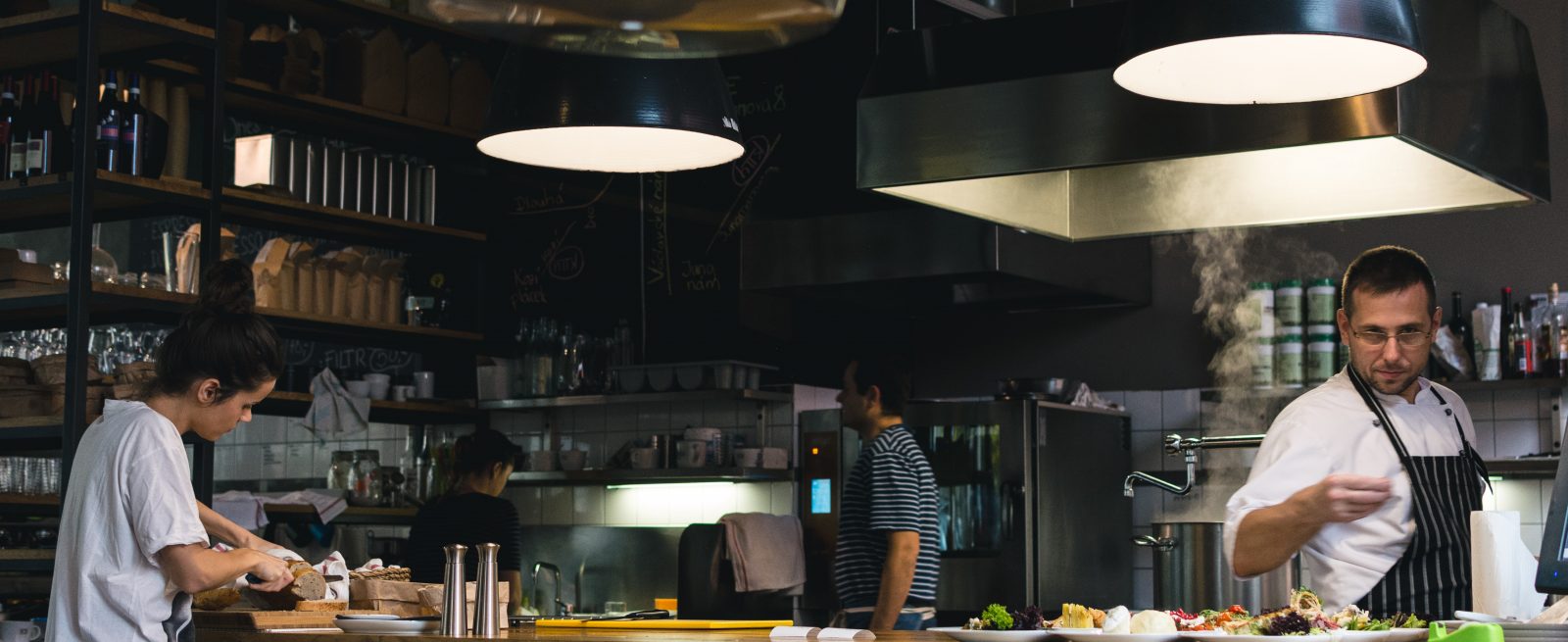Five Common Hospitality Industry Injuries and How to Prevent Them
5 Min Read By Amy Hodgetts
It’s common knowledge that working in the hospitality industry is fast and frenetic so it’s not a surprise there are a lot of workplace injuries. In 2016/17 approximately 434,000 injuries caused up to seven days of absence in each case. A further 175,000 caused a period of absence over seven days.
According to the Health and Safety Executive, the accommodation and food services sector has a lower statistically significant amount of work-related illness, but a higher statistically significant work accident claims rate.
What’s the cause of these higher than average injuries? According to Boutique Hotelier, the most common injuries in the hospitality sector are slips, trips and falls.
Slips, Trips and Falls
Accidents of this nature are the most common among non-fatal injuries to employees, accounting for 29 percent of the most common non-fatal accident kinds. It’s hardly surprising, given the nature of such accidents — nearly every workplace has the capacity to develop a slip or trip hazard! A spilled drink in the office, a curled rug corner in a shop, or something bigger like an oil or chemical spill in a factory. These things happen, but the problem arises when the spills and trip hazards aren’t addressed immediately, turning the risk into a cause.
This is when an accident becomes a work accident, as a failure to follow or implement a process (i.e. the workplace is at fault for not having a necessary routine to address the spill or trip hazard before an accident materialised).
Prevention:
- Signs for slippery areas
- Danger tape to highlight any potential trip hazards, such as steps or uneven flooring
- Non-slip footwear
- Signs to signal any recent spills
- Adequate lighting
- A process in place that has spills tended to immediately
If you fall:
The NHS recommends in the event of a slip, trip, or fall, to take your time when getting up. Only do so if you feel strong enough to.
Lifting/Handling
The second-most common workplace injury is lifting/handling accidents, clocking in at 22 percent of all non-fatal injuries.
Injuries from lifting and handling heavy items tend to revolve around muscle strains. Back pain, neck pain, arm pain, and leg pain can all result of a lifting or handling injury. These injuries usually occur over a stretch of time where you are frequently handling heavy goods, but it is possible to injure yourself from a one-off heavy item lifting situation. Your workplace ought to provide training for handling heavy goods, as well as relevant lifting apparatus where needed.
Prevention:
- Training on how to lift heavy goods
- Using apparatus to help lifting, where available
- If you think lifting equipment should be in place for a task, speak to your employer. Employees are often the best eyes and ears for potential risks!
- Ask for help with lifting heavy items
If you suffer a strain:
The NHS recommends rest, as well as the application of an ice pack on the injury for up to 20 minutes every two or three hours. A compression bandage can help to support the injury too, and elevating the affected area is advised. Avoid heat, as this can aggravate swelling.
Struck by an Object
Being struck by an object is the third most common workplace injury, and accounts for 10 percent of workplace injuries. Such injuries can cause a varying degree of problems, from minor cuts and bruises to more serious results like concussion or even blindness.
Items falling from a high shelf, moving loads with machinery, and dropping tools are all common causes of these accidents.
Prevention:
- Make sure that any objects that aren’t on ground level are secure
- Following from this, be sure that these items won’t be easily knocked
- Heavier items should be stored near the ground, and lighter items higher up.
- Self-standing items should be secured or stabled
- When using machinery to move loads, such as when operating a pallet truck or trolley, stick to designated routes
- Avoid working or moving under a moving load
- Inspect lifting apparatus to ensure everything is working
If you are struck by an object:
If the object caused a cut or graze, first stop the bleeding. Applying pressure with a clean, absorbent material will help with this. For more severe bleeding, raise the afflicted area: your arm or hand can be raised over your head, where lower limbs you should lie down and raise the limb above your heart. Clean the wound, cover it and seek medical help if the wound becomes infected.
If you believe the strike has caused a concussion, head to accident and emergency. Signs of concussion include a persistent headache, dizziness, confusion and/or memory loss, vomiting or sickness, imbalance, mood swings, vision changes, and struggling to stay awake.
Fall from Height
At seven percent of all non-fatal workplace accidents, falling from a height covers falling from ladders and scaffolding, or any other structure or platform that isn’t at floor-level. Although falling from a height is the fourth most common non-fatal work accident, they are the third highest contributor to fatal injuries at 20 percent.
Injuries from these sorts of accidents include broken limbs, fractures, bruises, concussion, and more.
Health and Safety Executive conducted a study within the food and drinks sector of 150 falls from height. The most common places to fall from where ladders (40 percent), vehicles (17 percent), machinery (10 percent), platforms (10 percent), stairs (eight percent), roof (seven percent), scaffold (four percent), warehouse racking (four percent).
Prevention:
- Where possible, control points and work should be designed to take place on ground level
- Permanent safety features should be installed if working at a height is frequent
- Steps, railing, etc.
- Minimise the risk of falling from a ladder climbing slowly, and avoid sudden movements
- Ensure the type of ladder or scaffolding is correct for the job at hand
- Do not overreach when on a ladder or scaffolding
If you fall from a height:
Due to the nature of these accidents, the injuries that result can be widely varied. Depending on the severity of the injury, medical attention will likely be required for a fall from a height.
Acts of Violence
The fifth most common non-fatal workplace accident comes as a result of violence, with seven percent of accidents at work attributed to this.
Unlike with the other accident causes in this article, it’s difficult to narrow down the resulting injury from this cause of workplace accident. Generally, employees who deal with face-to-face roles are at risk of violence, from customers or even other employees.
The injury caused by acts of violence can vary wildly, but that doesn’t mean they cannot be prevented.
Prevention:
- Regular staff meetings can be effective in highlighting problems faced day-to-day at work
- Informing your employer is a strong first step to having the matter addressed
- Detailed records of previous incidents will help to identify patterns, causes, and areas of concern
- Physical security measures, such as CCTV and security locks
- Wider counters can help protect staff in customer-facing roles
Sources:
http://www.boutiquehotelier.com/biggest-five-health-hazards-hospitality/
http://www.bytestart.co.uk/10-most-common-workplace-accidents-injuries.html
http://www.hse.gov.uk/statistics/causinj/index.htm
https://www.thecaterer.com/articles/201188/preventing-accidents
http://www.i-hospitality.co.uk/Health-and-Safety/Workplace-Accidents-Injuries/index.asp
http://www.workplacesafetyadvice.co.uk/common-injuriescauses-accidents-work.html
http://www.hse.gov.uk/statistics/industry/
https://www.safetyandhealthmagazine.com/articles/minimizing-the-risk-of-ladder-falls-2
http://www.hse.gov.uk/food/struckby.htm


